The flame flower should not be missing in any cottage garden. Here you can find out everything from planting to caring for and propagating phlox in your own garden.
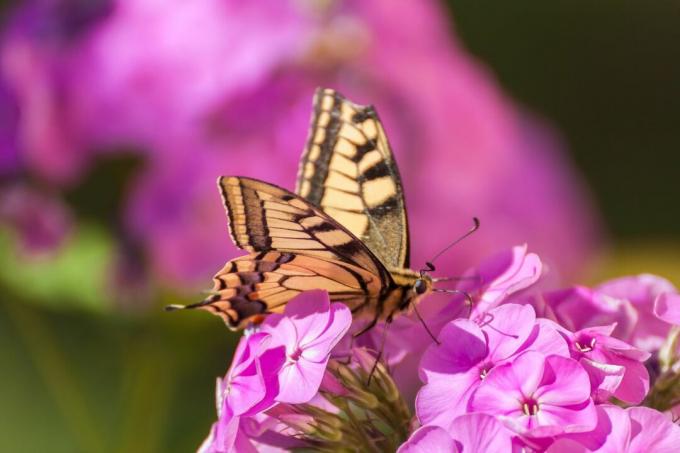
The beauty of the flame flower (phlox) is her wonderful summer fragrance. It not only inspires us, but also attracts numerous butterflies.
contents
-
phlox
- Phlox: origin and characteristics
-
Phlox species and varieties
- Phlox paniculata
- Phlox subulata
- Phlox drummondii
- Phlox amplifolia
- Phlox stolonifera
- Phlox divaricate
- Phlox douglasii
- Buying phlox: what to look out for
- Plant phlox
- Propagate phlox
-
Maintain phlox
- Pour phlox
- Fertilize phlox
- Cut phlox
- Hibernate phlox
- Common phlox diseases and pests
phlox
Phlox is an asset to any garden. By choosing the Flame Flower you are not only doing something good for your eyes, but also numerous insects will thank you, because phlox is an excellent herb. It not only blooms a lot, but also blooms for a long time.
Phlox: origin and characteristics
Phlox is one of the so-called heavenly ladder plants (Polemoniaceae) and is also called the flower of flame. The phlox itself is just as beautiful as its names sound. The plant is native to North America, Asia and parts of Russia. There it grows in different climatic zones, which is why many different phlox species have developed. And quite a few of these have made it into our gardens for a long time. The plants come in a wide variety of shapes: large or small, elongated or creeping on the ground. What they all have in common is that they are herbaceous and stand out with their characteristic flowers. Most phloxes are perennial and can easily survive cold winters.
Phlox species and varieties
The phlox counts over 70 species. And since he was 18. As an ornamental plant came to Europe in the 19th century, countless varieties were also bred. Today, the selection of the most diverse phlox species and varieties is extraordinarily large. Many of the species bloom in shades of white, red, pink, and purple throughout the summer.
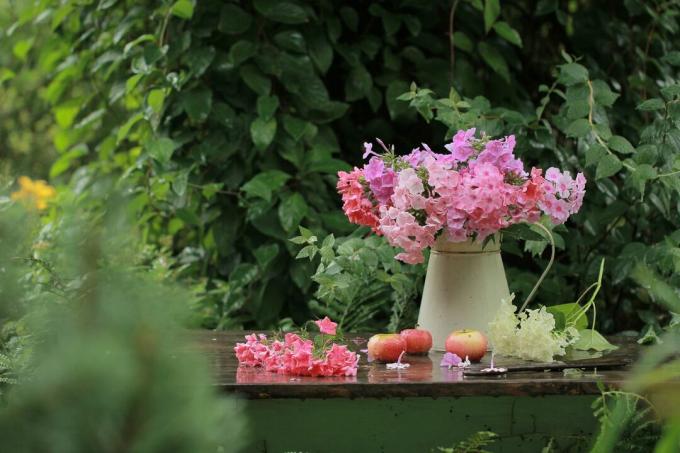
Phlox paniculata
The high perennial phlox is probably the best known of the innumerable phlox species. It comes from North America and reaches a height of up to 1.5 meters. This makes it a popular companion in many a perennial bed or cottage garden. He likes it humid and sunny.
Find out more about the summer shrub here Phlox paniculata.
Phlox subulata
The carpet phlox can hardly be compared with the tall perennial phlox, which is considered to be the epitome of the phlox. Carpet phlox, as the name suggests, grows in width rather than in height. He loves walls and crevices in the sun.
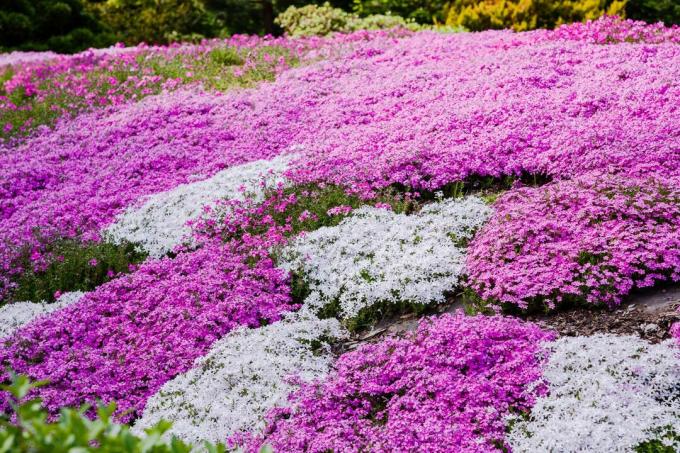
Phlox drummondii
The summer phlox is an annual species of phlox. The plant is widespread in Texas as a wild plant and is often used in this country as an ornamental plant. It only reaches a height of up to 50 centimeters.
Phlox amplifolia
The large-leaf phlox is quite similar to the tall perennial phlox. It can also grow to a height of 1.5 meters. The most important distinguishing feature are its significantly larger leaves. In addition, it is less susceptible to drought, diseases and pests. It is therefore always suitable where the Hohe Stauden-Phlox does not want to thrive completely.
Phlox stolonifera
The so-called wandering phlox is also a good ground cover for shady areas. But do not worry - it does not spread uncontrollably, but can easily be put in its place. It blooms in spring and early summer, so it feels good under deciduous trees, for example. There is still enough light there early in the year. The wandering phlox also likes to grow along shady walls.

Phlox divaricate
As expected, the forest phlox can also cope with little light. It blooms in early spring and feels good, for example, between tall perennial plants that later rise up. The forest phlox also gets along well on the edge of the forest and under deciduous trees and bushes.
Phlox douglasii
The upholstered phlox is the right type of phlox for the stone or roof garden, because it loves the sun. The plant grows like a cushion over everything that gets in its way and is only about 5 centimeters high. It blooms in various shades of purple in May and June.
The most important thing about the small one Phlox douglasii can be found here.

Buying phlox: what to look out for
Phlox is available in a wide variety of varieties. Before buying, you should therefore consider which phlox species best suits the selected location. If it is a sunny place, for example the high perennial phlox, the cushion phlox or the summer phlox are possible. The latter, however, unlike the others, is annual and has to be sown every year. Forest phlox and wandering phlox are suitable for shady places. Otherwise, of course, the color is crucial. Some varieties even have eyes in the center of the flower that contrast with the rest of the flower color. Do not only consider the location requirements and the flower color, but also the time of flowering. Early flowering species are forest and wandering phlox. Sun-loving species usually bloom a little later and therefore longer.
tip: Since phlox is quite susceptible to mildew you should pay attention to white and grayish coverings so as not to introduce the fungus into your garden when you buy it.
The most important criteria when buying phlox:
- Location requirements
- Flower color
- Flowering time
- Check powdery mildew infestation
Phlox is often sold in markets and should always be found in nurseries. There is a wide range of offers online, for example in the webshop of Gaissmayer or at the nursery Countess of Zeppelin.
Plant phlox
Planting phlox is not that difficult, but there are a few things to keep in mind. While some phlox species prefer a sunny location, others prefer the shade. Plant phlox in a freestanding position so that powdery mildew cannot develop and take breaks in cultivation.
Anything else of any importance to that Planting phlox is, find out here.
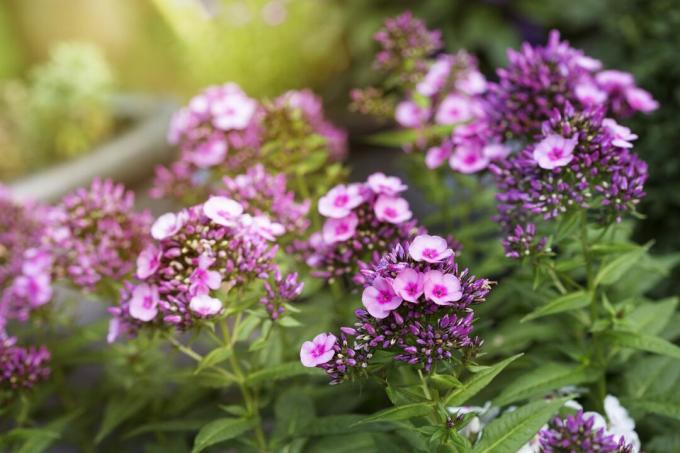
Propagate phlox
Flame flowers can be propagated in three ways: Either directly from cuttings or by dividing them. If you leave withered inflorescences, then seed reproduction is as good as possible.
Find out what you can do with Propagating phlox and how to best proceed.
Maintain phlox
Phlox is easy to care for and straightforward. However, in order to get him to full bloom, you should support him.
Here we show you how to use your Maintain phlox can allow it to thrive.
Pour phlox
The water requirement varies greatly depending on the species. Usually there is not much watering except before and during flowering. Keep in mind, however, that species suitable for rock gardens, while usually requiring less water, will also inhabit a much drier location.
Fertilize phlox
A starter from a slow release fertilizer like ours Plantura organic flower fertilizer helps the phlox on the jumps and provides it with optimal nutrients. Alternatively, you can compost or Manure as fertilizer put into the planting hole. To really get the flowering going, you can add a portion of fertilizer just before flowering.
Cut phlox
In principle, phlox does not need pruning; the main purpose of pruning is to rejuvenate wintergreen species. Removing withered inflorescences after flowering has the advantage that the plant does not sow itself. If you don't mind an increase in phlox, you can safely leave the inflorescences and enjoy even more phlox in the next year. Otherwise, in the case of deciduous flame flowers, the cut of the dried up shoots occurs in autumn.
What is the Cutting back phlox you can read here.
Hibernate phlox
Phlox is basically hardy and does not need special attention before winter. The aboveground parts of the plant die in many species over the cold season, but sprout again in spring.
Tip: Let dead shoots stand until they sprout again in spring, so insects like wild bees will find a place to overwinter.
Common phlox diseases and pests
To prevent infestation with diseases and pests, you should use fertilizers with a low nitrogen content. Nitrogen is absolutely necessary for the growth of plants, but too much leads to an increased susceptibility of the plants.
Against the real one mildew (Erysiphe cichoracearum) Basically only a light and well-ventilated location helps, because powdery mildew likes it moist. The fungus is easy to recognize because it covers the leaves and stems as a white-gray coating. The large-leaf phlox is more resistant than the high perennial phlox.
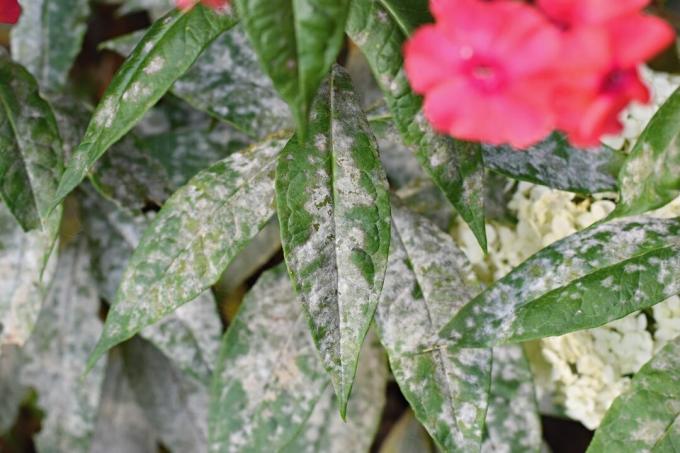
A second group of mushrooms is also not averse to the phlox. These mushrooms belong to the group of Ascochyta and Septoria lead to so-called leaf spot disease. As the name suggests, this results in unsightly dark spots and dots on the leaves, which later lead to leaf fall. As with powdery mildew, a common cause is excessive humidity. An airy location is also helpful. However, do not water the plants from above to avoid wet or damp leaves. In the event of an infestation, you should definitely cut back all infested plants and burn the resulting green cuttings or dispose of them in the household waste.
The third major pests in the phlox are the stem nematodes (Ditylenchus dipsaci). The longer the plant grows in the same place, the more pests such as stem nematodes multiply. They rob the plant of strength and energy and lead to the stunting of leaves and shoots. It only helps to change location from time to time. It is best to replace infected plants with cuttings.
How the cuttings propagation works and other methods for Propagation of phlox You will find here.
